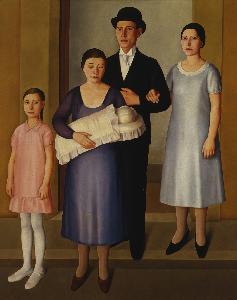Antonio Donghi
Antonio Donghi
Place: Rome
Born: 1897
Death: 1963
Biography:
Antonio Donghi was an Italian painter born on March 16, 1897, in Rome, Italy. He studied painting at the Instituto di Belle Arti from 1908 to 1916. After military service in World War I, he studied art in Florence and Venice, soon establishing himself as one of Italy's leading figures in the neoclassical movement that arose in the 1920s.
Artistic Career
Donghi was known for his refined technique, strong composition, spatial clarity, and populist subject matter. His figures possess a gravity and an archaic stiffness reminiscent of Piero della Francesca. Critics likened his work to that of Henri Rousseau and Georges Seurat, whose scenes of contemporary life are similarly touched with a subtle humor. His still lifes often consist of a small vase of flowers, depicted with the disarming symmetry of naive art. Neoclassical Movement was a significant period in Donghi's career, and his work from this time is characterized by its elegance and simplicity. He achieved both popular and critical success, and in 1925, Franz Roh named him among the major Italian artists in the new magic realism tendency.
Awards and Recognition
In 1927, Donghi won First Prize in an International Exhibit at the Carnegie Institute in Pittsburgh. This recognition helped establish him as a prominent figure in the art world. However, by the 1940s, Donghi's work was far outside the mainstream of modernism, and his reputation declined, although he continued to exhibit regularly.
Later Work and Legacy
In his last years, Donghi concentrated mainly on landscapes, painted in a style that emphasizes linear patterns. He died in Rome in 1963. Most of Donghi's works are in Italian collections, notably the Museo di Roma. Today, art lovers can explore Donghi's work and other notable artists at Wikioo.org, which offers a vast collection of handmade oil paintings reproductions and prints on canvas.
- Visit Antonio Donghi's page at Wikioo.org to learn more about his life and work.
- Explore the neoclassical movement and its key figures, including Donghi, at Wikioo.org's art categories.
- Discover other notable artists, such as Piero della Francesca and Georges Seurat, at Wikioo.org's artist biographies.
Donghi's legacy continues to inspire art lovers and scholars today. His unique style and contribution to the neoclassical movement make him an important figure in Italian art history. For more information on Antonio Donghi and other artists, visit Wikioo.org or check out the Museo di Roma website for a comprehensive collection of his works.

